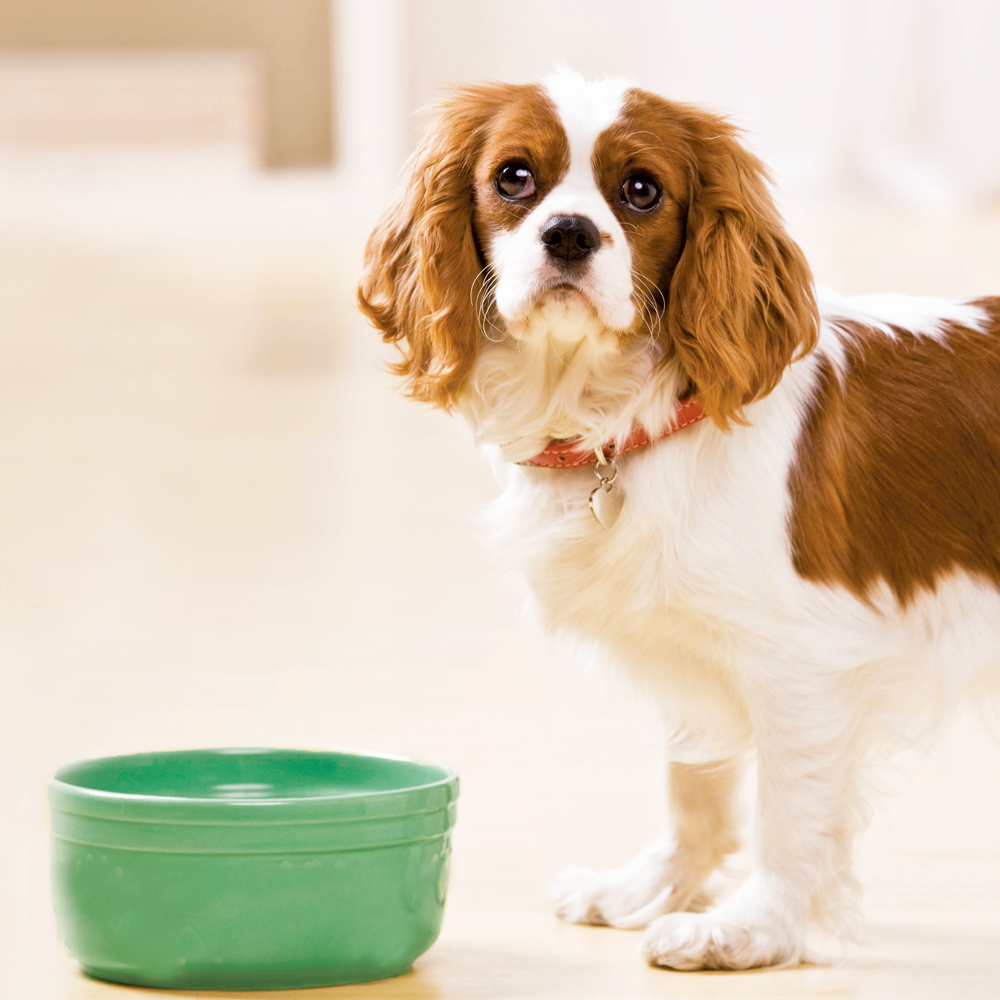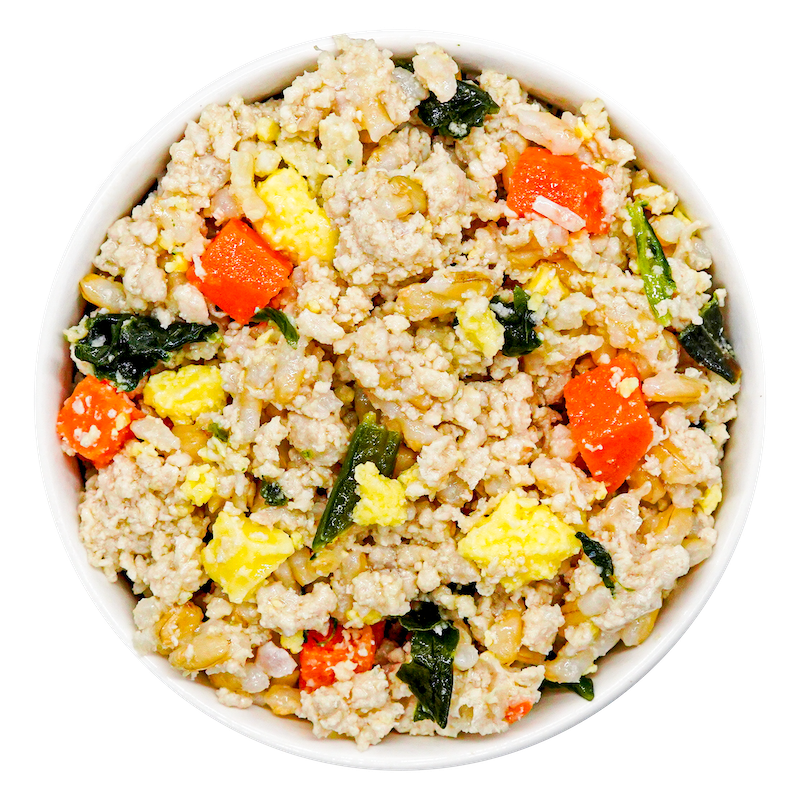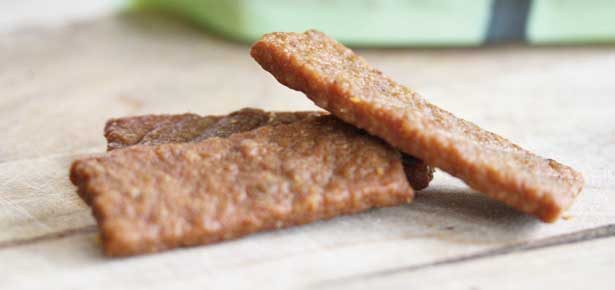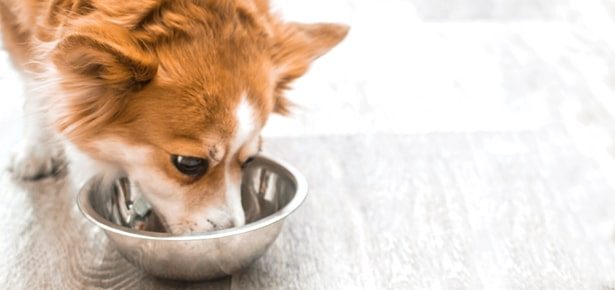
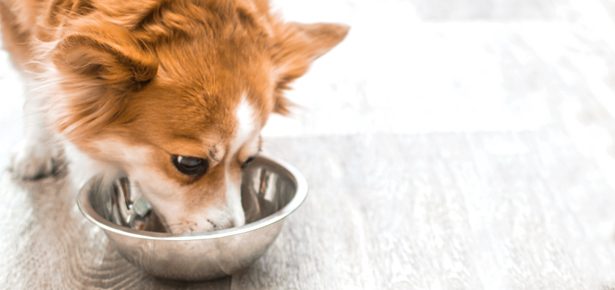
What Is The Best Dog Food You Can Choose For Your Pup?
Learn what three top vets say about what you should—and shouldn’t—be feeding your dog.
What is The Best Dog Food You Can Choose For Your Best Friend?
Sandra Czarny thought she was giving her Australian Shepherd the very best—a veterinarian-recommended food that was sold through the clinic. Was it the best dog food you can find?
But at seven months old, Rolex began vomiting. Previously housebroken, he was having accidents in the house. Worried, Sandra took him to the vet, and was shocked when the blood work and urinalysis showed her puppy was suffering from juvenile kidney failure.
“His kidneys were just failing him,” remembers the Ottawa resident. “The vets wanted to prescribe a kidney diet to try to prolong his kidney function.” Sandra began her own research. “What I delved into was a lot of information on why my current dog food was killing my dog,” she says. She began cooking for Rolex, and within a week, his kidney function had normalized.
Although Sandra can’t prove that it was the food, she said her dog had no underlying health issues or predisposition to kidney problems. “None of his littermates [had] kidney issues though I have no idea what they were fed,” she says. “Highly processed, dry, low protein, full of fillers (bad grains such as corn, wheat, etc.) dog food can lead to kidney disfunction. My vet said at the time that it could be the food but that one would never know. She was supportive of a diet change although was pushing for me to put Rolex on medication. We never had to do the meds since his condition reversed in a week on real food.”
Rolex lived another 13 years—something Sandra, now a dog breeder, attributes to a healthy diet. “To this day, if I feed kibble to my dogs, I always add water to it to help with the breakdown of food to support the kidneys,” she says.

With many feeding options, it’s hard to know where a pet owner should begin to know what is the best dog food? Like Sandra, most people are wanting the very best for their dog, but don’t know where to begin: Kibble or wet food? Food sold at the vet’s clinic, or a pet store? Raw or cooked? And what about dehydrated? What about people food you can feed your dog?
“Nutrition is perhaps the most important aspect of preventative health, but also one of the most controversial and confusing topics,” says Vancouver-based veterinarian Dr. Katherine Kramer.
“There are a lot of factors that go into picking a diet for your pet, such as the age and health of your pet, whether your pet has any food sensitivities, what your lifestyle is— whether you travel with your pet, do you have time to cook or prepare food, what is your budget for food, etc. The best place to start is to look at these factors and determine what you and your pet need in a diet.”
Fortunately, expensive “most definitely” doesn’t always equal better when it comes to whatt is the best dog food for your pet, says Dr. Danielle Bernal, a Boston-based veterinarian who specializes in animal nutrition.
“In the pet food category, the most expensive pet foods are often those that are certified organic or 100 percent fresh or frozen, which is a format of feeding that appeals to some pet parents who are willing to pay the extra dollars,” says Dr. Bernal, an on-staff veterinarian with Wellness Natural Pet Food.
“However, it doesn’t mean that other formats of food are inferior or lower quality—quite the opposite really. In finding the ideal spot between what is the best dog food is determing the quality and affordability, the first thing for pet parents to consider is a budget they are comfortable with and then knowing how to differentiate between the recipes to truly see which brands offer the quality you’re looking for within a format of food (i.e. kibble). The more expensive products often have higher meat quantities, whole food ingredients, and more nutritional supplements, all of which does deliver superior health benefits, but these are best seen when the dog is able to have it every day, so it’s important to ensure that the pet parent’s budget is met at the same time.”
After determining your dog’s needs (for instance, life stage and any food allergies), the next step should be your veterinarian, says Dr. Kramer, a graduate of the University of Georgia College of Veterinary Medicine and a diplomate of the American Board of Veterinary Practitioners.
At VCA-Canada Vancouver Animal Wellness Hospital—a small animal integrative hospital in Vancouver, British Columbia where Dr. Kramer is the medical director—she works very closely with a variety of veterinary nutritionists to help pet parents feed complete and balanced diets ultimately determing what is the best dog food for thier pets.
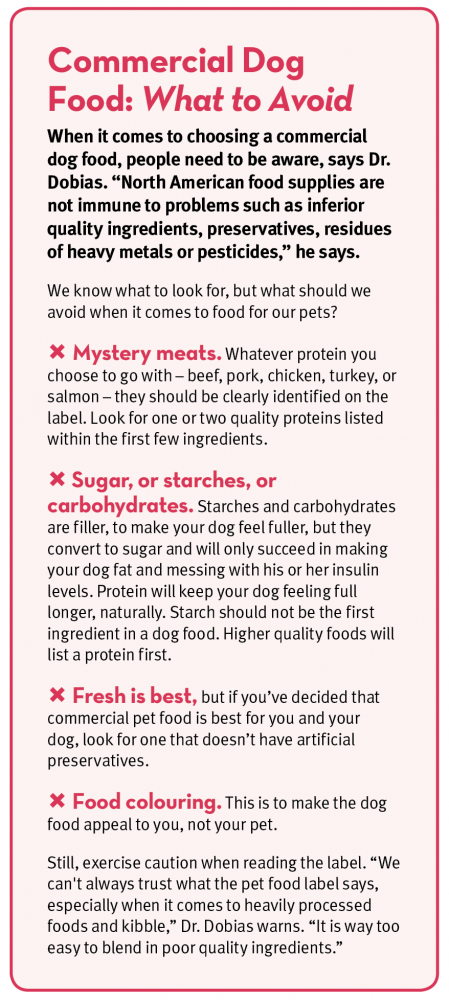
Dr. Peter Dobias agrees.
“If people compromise on quality, they ultimately pay the difference on vet bills,” says Dr. Dobias, who specializes in Western and holistic veterinary medicine and nutrition for dogs and in 2011, became Canada’s first dog-only veterinarian.
The founder and CEO of Dr. Dobias Healing Solutions Inc., Dr. Dobias divides his time between Vancouver and Prague and is recognized in the industry as one of the leaders of modern integrative veterinary medicine. What’s best for a dog’s health, he adds, is food that nature intended.
“Canines have evolved at least for 300,000 years, and their diet has always consisted of prey animals, including meat, organs, bones, and small amounts of plants and fruit,” he says. “I generally do not recommend kibble or dry food period as it is a conflict with nature's principles of a healthy diet. Any food that is heavily processed and sits on the shelves for weeks, months, and sometimes years doesn't belong in a dog's bowl.”
Dr. Kramer is also a big proponent of homemade foods for dogs. “If I were to recommend any food, it would be a fresh, whole foods diet to be cooked and assembled at home. Besides the necessary nutrients, I would add some of my favourite health foods—hemp seed, turmeric, probiotics, and glucosamine.”
“Every grandmother knows that wholesome homemade food is better than processed foods,” says Dr. Dobias, who suggests wholesome meats, raw bones, and veggies— ideally organic and non-medicated. “However, there are some ethical raw and cooked food manufacturers who make great food.”
A homemade diet that uses whole foods is more work than feeding a commercial diet and those who are willing and able to take on the task should work with veterinary nutritionists to formulate a specific recipe for their pet to ensure that the home-cooked diet is complete and balanced, Dr. Kramer says.
Homecooked meals for pets are not always possible or realistic. The challenge with homemade pet foods is that it’s difficult to ensure the food is complete and balanced to meet your dog’s nutritional needs, says Dr. Bernal. She recommends that pet parents use a high-quality store-bought food as the base and incorporate homemade elements as a topper or adjacent offering.
“Any food that is heavily processed and sits on the shelves for weeks, months, and sometimes years doesn't belong in a dog's bowl.”
For people that would like to feed homemade but lack the time or inclination, there are new companies like NomNomNow that, recognizing the need, make and deliver balanced, custom-made fresh meals for dogs to doorsteps across the US.
Dr. Bernal recommends looking for a commercial pet food manufactured in North America, which “has some of the highest standards when it comes to the production of crafting pet food as well as superior ingredients.”
The place of manufacture is important, especially in Canada, where the pet food industry is not regulated, says Dr. Kramer. In Canada, the Pet Food Association of Canada (PFAC) is a group of pet food manufacturers that promotes labelling and nutritional requirements, but they are not a regulatory body. In the United States, the Association of American Feed Control Officials (AAFCO) sets standards, but does not regulate, certify, approve or test any diet, so it is up to the individual manufacturer to meet these standards. Although foods from the U.S. and Europe are better regulated now than in the past, recalls are still frequent, Dr. Kramer says.
Still other dog owners will choose a raw diet for their pets, citing higher digestibility, palatability, and higher pure protein content as reasons. “Many dogs and cats can do well on raw, but it is more labour intensive,” says Dr. Kramer.
Dr. Dobias has been feeding his pets raw foods for more than 20 years. “I would never feed my dog kibble,” he says. “Everyone with common sense must know that wholesome food is always better than processed kibble or highly heated canned food.”
If the pet owner chooses to go this route—and many of Dr. Kramer’s patients do—they should consider whether it’s right for their dog (young adult and athletic dogs typically do well on raw diets) and whether it works with the animal’s health issues (raw diets are good for dogs with food sensitivities and gastrointestinal issues). Things to keep in mind when serving a raw food dog diet include quality and safe handling of the raw ingredients (meat, bones, and veggies—note that the inclusion of the raw bones is necessary), as well as added supplements (vitamin, mineral, omega-3 essential fatty acids) to ensure a complete and balanced diet.
Once the what of feeding is taken care of, it becomes a question of how often.
As dogs are “natural fasters"—canines would sometimes go for days without food in nature—Dr. Dobias recommends feeding dogs once a day, although twice is also OK. Puppies up to six months should be fed three times a day.
Dr. Kramer says the number of feeds per day can depend on the dog. “The main issue is to feed the correct amount for your dog daily and then figure out what suits your and your dog's lifestyle,” Dr. Kramer says. “If you are feeding a commercial brand, then you should be able to follow the feeding guide printed on the bag. With raw diets, it is recommended to feed two to three percent of the dog's body weight daily.”
The best tip, however, is to watch the dog’s body condition, adds Dr. Bernal.
“No two dogs are alike and feeding guidelines may vary based on each pup’s unique needs, so always watch their body condition,” she says. “If you notice that your dog is gaining or losing weight over the course of a few weeks, then I advise to decrease or increase the amount of food by 10 percent accordingly.”
All dogs really are different, and owners will have to determine what their budgets and dog’s needs are to know what is the best dog food for their family—and find a balance. “The bottom line for my patients is how they are doing on a particular diet,” says Dr. Kramer. “If they are happy to eat, have good energy, have a healthy coat and stools, and aren't flatulent or vomiting, then that diet is working well for them,” she says.
Modern Dog Favorite Food Pick:
Nom Nom uses human-grade ingredients to prepare fresh, healthy, pre-portioned meals that are delivered right to your door.
Modern Dog has partnered with Nom Nom to offer our readers a special offer for their made-to-order, personalized fresh dog food. See the difference a fresh food diet can make for your dog and sign up today to get 50% off your first order of Nom Nom!
We promote the best information and products for our readers, and some may be affiliates of Modern Dog, which means we make a small amount when you purchase. Thank you for your support!
Join the newsletter and never miss out on dog content again!
"*" indicates required fields
By clicking the arrow, you agree to our web Terms of Use and Privacy & Cookie Policy. Easy unsubscribe links are provided in every email.
